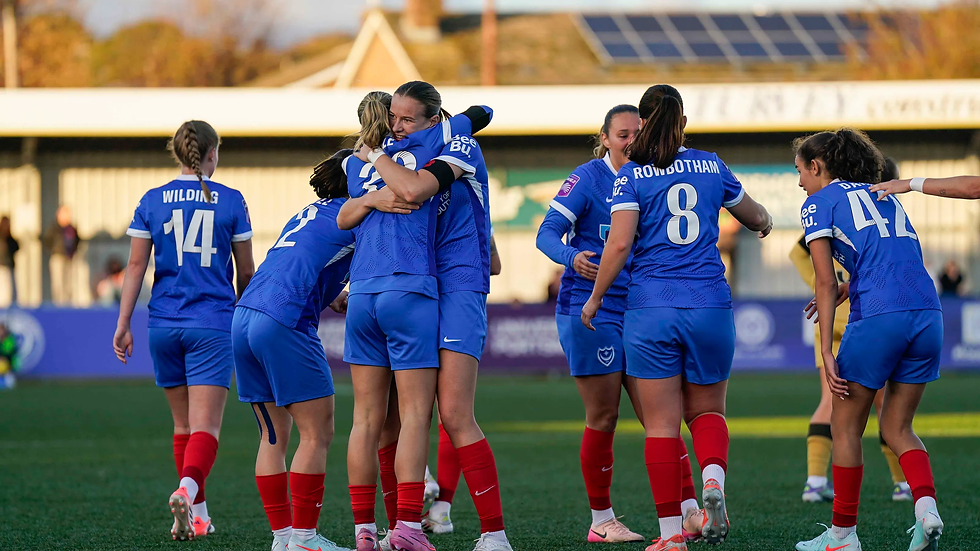Bigger Crowds, Bigger Stadiums: Why are the Lionesses playing in the North?
- Her Way To Glory

- Apr 18
- 3 min read
✍️Gabriella Valentine
Since the Lionesses Historic Win, which saw them crowned European Champions in 2022, there has been a drastic increase in attendances across the Women’s Game. The Lionesses have become role-models who have inspired a generation- but why, suddenly, does it feel that the North is forgotten?

The England Women’s National Team have become a symbol of national pride. Since their triumph, thousands of fans have been travelling across the country, and the world, to get a chance to watch the Lionesses Live.
Popularity surged, reaching an all time high, forcing media outlets, broadcasters and major sponsors to take notice and invest in the Women’s Game. Along with the increase in coverage, came sell-out and record breaking crowds. A record-breaking crowd of 87,192 fans filled the stands of Wembley setting the highest attendance for any European Championship match, men or women’s at the time. Not only did the win see an increase in support but it also acted as a catalyst to influence the young girls in the stands as 68,000 more girls started playing a sport.
The Women’s Game is often promoted as ‘inclusive’ and ‘accessible’ for everyone, so why is there a drastic difference in the amount of games played up north compared to in the south? Post-Euros, only 19 fixtures have been played in England with 16 of these games being played in the South of England.
During the Euro 2022 tournament, Old Trafford hosted the tournament opener on a Wednesday evening.
At the time, this drew in the highest ever crowd for a Women’s European Championship game with an attendance of 68,871. More recently, 46,550 fans turned up to support the Lionesses as they took on World Cup Champions on a Wednesday night at Wembley Stadium. Previous to the major tournament, the Lionesses had failed to draw in a larger crowd than 20,000, with the most noticeable attendance being at Elland Road (19,365).
Clubs, such as, Manchester United and Manchester City, regularly draw in a large amount of supporters to their respective main stadiums when a Women’s match is played there.
Combining the four clubs who play up north in the Barclay’s Women’s Super League, you get a combined average attendance of 25,514. Outside of any tournament Liverpool or Manchester, both of which are classified as major cities, have not hosted a Lionesses fixture. So if the demand is there, why isn’t it being met and why aren’t we expanding the exposure into new places?
There is many possible reasons for the outcome of fewer games being played in the North. Often the perception is that the bigger stadiums which draw in bigger crowds are based in bigger cities in the South.
While many of the major stadiums in London sit at a larger capacity than those up North, many of the Lionesses recent games have been played outside of London in smaller stadiums.
Old Trafford is the second largest football stadium in England with the next three outside of London, being Anfield, The Ethiad and Goodison Park. In fact, in terms of Stadium Capacity, there is twelve Northern stadiums between Old Trafford and the next stadium located in the South.
Therefore, one of the only justifiable reasons left is that Stadium’s in the North are either not approached or are unwilling to reach hosting deals. However why are these northern clubs passing up the opportunity to host one of the most popular teams in the country, especially when they’ve hosted Lioness or Three
Lion’s fixtures before. It could be down to scheduling conflicts with Men’s club fixtures or a reluctance to disrupt club priorities. However, could the problem be rooted deeper with the FA’s planning, outreach, communication and priorities?
When do the excuses start to wear thin?
The Women’s Game deserves to be treated as football, not as a second their sport forced to have limitations due to the gender of those participating in it. It deserves to be treated with equal access to the biggest stages in the country, regardless of the postcode.
When we limit the visibility we reduce the chance of growing the fanbase to local football fans but more importantly providing we risk cutting off the future generation of young girls who dream of one day putting on a Lioness shirt. The Lionesses represent an entire country. It’s time that the fixture list starts to.




Comments